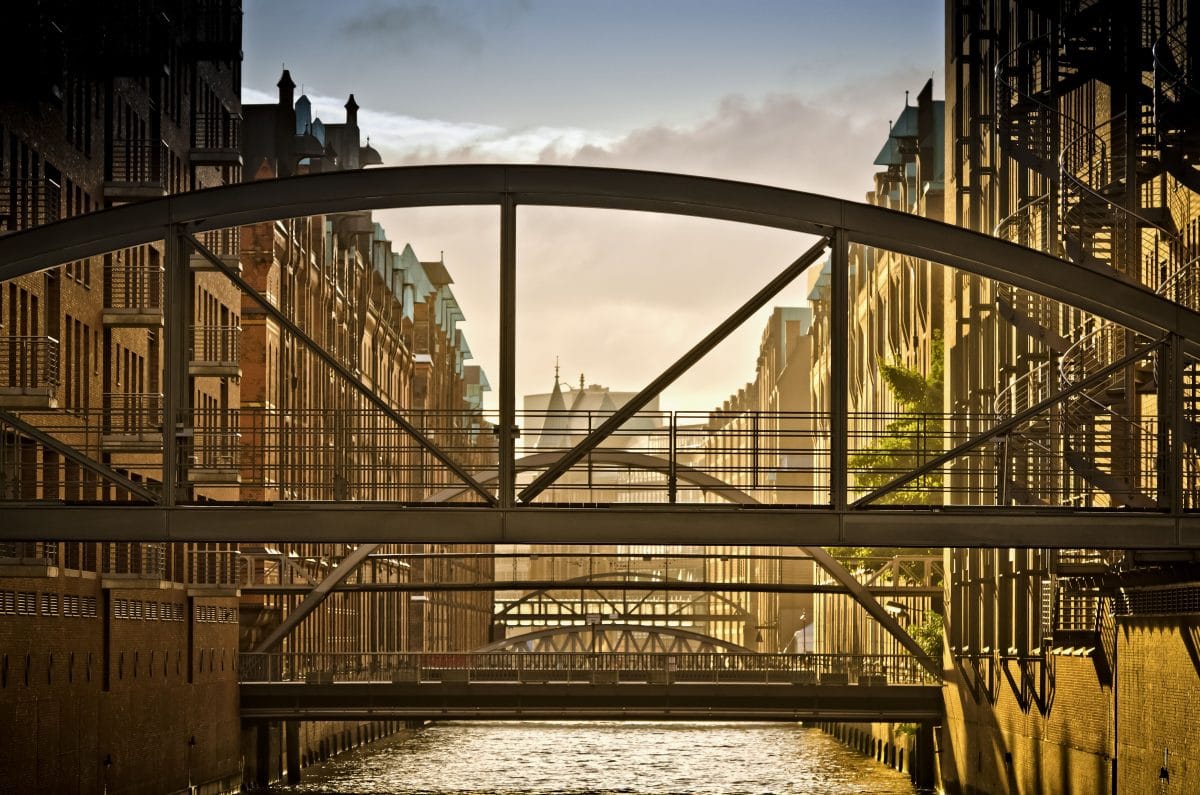Fish, and the waters where they swim, both come to mind when I think of Hamburg, Germany’s second largest city and largest port. Although the waters of the North Sea are 65 miles from this maritime city, it is water that imbues the city with a distinctive, enticing flair. It seems water is seldom out of sight or sound – the shrill caw of seagulls, the groaning of ship horns, sailboat spinnakers ballooning on lakes where swans glide. Hamburg is set around the shores of two lakes, the Binnenalster (inner Alster) and Aussenalster (outer Alster). Three rivers, the Elbe, the Alster and the Bille, traverse the city, as well as narrow canals, more than in Venice. And bridges – Hamburg has more than any city in the world. It makes for picture postcard scenes and photo opps around every corner.
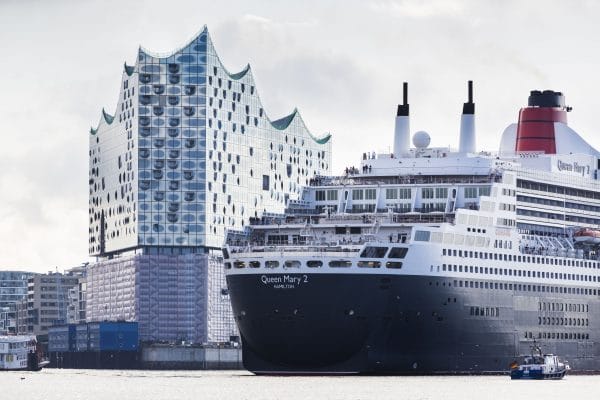
Photo By Jörg Modrow
There are fabulous restaurants where fish (and more) is the highlight of the menu. With 10 Michelin-starred restaurants and a total of 15 stars, Hamburg is one of Germany’s culinary capitals. The sizzling food scene is dynamic and innovative. In addition to savoring the freshest of fish, it was the selling of fish that captivated me on a recent visit. The Sunday morning fish market with its whacky auction is raucous entertainment that’s not to be missed. Fish vendors tear a sheet of white butcher paper off a roll, lay it across one arm, and shout out the names of their bounty: perch, halibut, eel. Each specimen is held high with a dramatic flourish for all to admire, then slapped down on the paper. The boisterous salesmen roar like carnival barkers, crack jokes and poke fun with the audience – all in hopes of a better price. They may even toss a slimy fish or two to the crowd.
The Fish Market dates back to 1703 when fishermen petitioned the city to sell their catches on Sundays. The clergy would have none of it, fearing the market would conflict with religious services. A compromise was reached whereby the market could open at dawn, but must close at 9:30 a.m. to give citizens ample time for church. This unique Sunday morning ritual from 5 am to 9.30 (from 7a.m. in winter) is now much more than fish. Fresh fruit and produce, candy, pastries and Hamburg’s famous fish sandwiches are on sale at the outdoor market. Merchants hawk handicrafts, pots and pans, clothing, jewelry, flowers and even a few antiques. It’s THE place to end a long Saturday night of merry making – and to continue dancing in the nearby historic Fish Market Auction Hall if so inclined. There are picnic tables and food stands along the walls. Ompah music blares from a band. It may be early morning but it’s a party like no other.
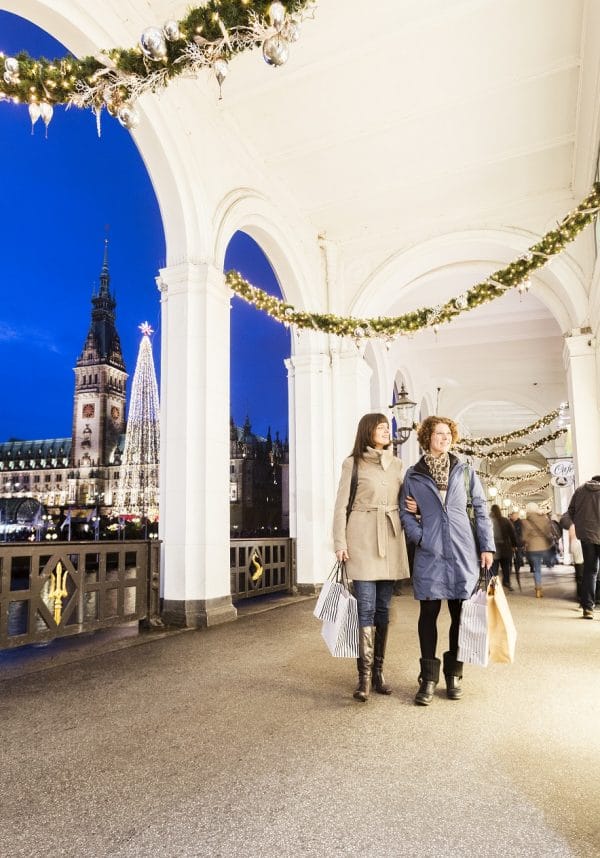
The Fish Market represents the gritty, maritime side of Hamburg but there is another side: a refined, sophisticated metropolis. Hamburg is one of Germany’s wealthiest cities and was ranked amongst the 10 most livable cities in the world by a noted global livability ranking. It’s one of Germany’s greenest cities with sprawling parkland. Walking and bike paths parallel its lake shores. Furriers, jewelers, and high-fashion boutiques line the Neuer Jungfernstieg, an elegant street along the Alster. “Hamburg has style and elegance. It’s where young, well-educated Germans want to live. There are lots of restaurants, culture, and the water. I love it. It’s my favorite German city,” says my friend Gerlinde who lives south in Stuttgart.
More and more tourists are discovering the city’s charms. Soon to attract even more is the Elbphilharmonie Hamburg, a cultural landmark to rival the concert halls of Los Angeles, Sydney and Bilbao with its spectacular design by architects Herzog & de Meuron. The Grand Hall, the largest of its three concert halls, places the orchestra in the center surrounded by terraced seating for 2,100. Opening in January 2017, the Elbphilharmonie is part of a stunning complex in HafenCity, a 400-acre urban development project that includes a 250-room luxury hotel. The former docklands on the Elbe have been transformed into a commercial, residential and recreational district known for alluring architecture with mesmerizing glass towers.

Photo By Andreas Vallbracht
Speicherstadt, a picturesque area of canals with 17 old red brick warehouses, is a UNESCO World Heritage Site and Hamburg symbol. The seven-story tall buildings were built at the turn of the last century with entrances from both water and land. Some are still used to store spices, carpets, and other goods while others house museums.
Train buffs will love Miniatur Wunderland with the largest model railway system in the world: 930 trains with nearly 14,450 railway wagons, plus hundreds of thousands of trees, figures, buildings and bridges. In this Lilliputian world, tiny locomotives race by mountains, forests, coasts and cities.
On the southeastern edge of the port is another fascinating museum: BallinStadt, the emigration museum. Between 1850 and 1939, more than five million people boarded ships in Hamburg, setting off for a new life in a new world. The museum features an interactive exhibition across three museum halls providing an insight into their lives and dreams, and the historic background of their emigration.
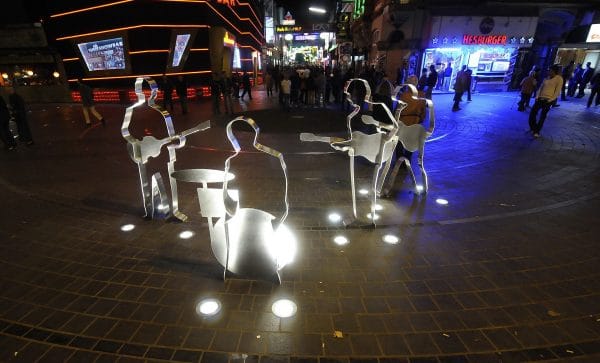
Photo by Martin Brinckmann
St. Pauli, with its notorious Reeperbahn known as “the sinful mile,” is the city’s red light and entertainment district where bars and restaurants abound. It was originally a hangout for sailors but today tourists are among those who ogle the scantily clad women posing in the windows waiting to be chosen. In the ‘60s the Beatles lived here and played in several clubs. Lennon later stated that although he was born in Liverpool, he felt he had grown up in Hamburg.
Acclaimed eateries are found throughout the city’s different districts where young chefs offer avant-garde concepts. The trend is for simplicity with the focus on artisan food from regional, eco-friendly sources. New on the seafood scene is the Boathouse, located on a canal, and offering fine dining with a casual ambience. Many dishes are shared family style and the restaurant even rents boats. Kevin Fehling’s The Table (three Michelin stars) accommodates just 20 guests who sit around an open kitchen savoring his modern interpretations of classical dishes. Food trucks are an interesting addition to the culinary scene. In the Altona district gourmet trucks as well as mobile food booths offer homemade regional specialties. Robert Wullopf and Hagen Schäfer, two chefs who run the restaurant Lokal1 in the Schanzenviertel district, have a bright green gourmet truck often seen at local markets.
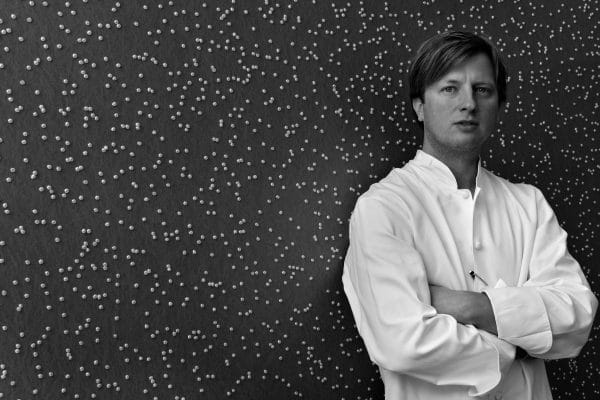
Photo Courtesy of Kevin Fehling
Thanks to the city’s synergy with water, fish creations are high on the list of local specials. Finkenwerder Scholle, pan-fried plaice with bacon bits and fried potatoes, is delicious and eel and herring are big, with numerous varieties of the latter. Fischbrötchen, a roll with raw or fried fish inside, is a popular street food. Aalsuppe, which many think means eel soup, is traditional fare. Aal is actually an old Saxon word meaning “everything,” but not necessarily eel. However, today eel is often included as most diners expect it. My favorite German dessert, Rote Grütze, hails from Hamburg. This yummy summer pudding is made from fresh berries and is usually served with cream.
And let’s not forget hamburgers. There are many theories on the origin of hamburgers, the name for the citizens of Hamburg, but most trace the burger back to Hamburg. Emigrants on board those ships sailing to American were said to have relished a wheat bun stuffed with roast meat. Once on land they continued to enjoy the treat, but substituted ground meat for the roasted variety. In Hamburg, ground meat patties known as Frikadelle are considered the precursor of the hamburger. They are made from a mixture of ground beef, soaked bread, egg and chopped onion. American style hamburgers are popular in the city’s numerous burger bars where you can find all manner of creative variations.
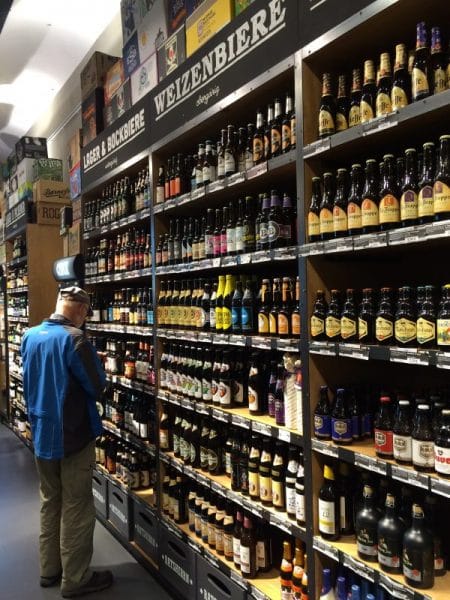
How about a beer with that burger? Hamburg’s beer culture is undergoing a renaissance with craft beers now the trend. Local microbreweries are brewing tasty varieties, from pale ales to stout. Beer was the beverage of choice in the Middle Ages when Hamburg had more than 600 breweries.
After a beer and burger lunch, indulge in that delightful German afternoon ritual, Kaffee und Kuchen (coffee and cake). Hamburg hosts an exciting scene of young gourmet coffee roasters and many comfy cafes. Coffee, which played an important role in the history of the port city, is one of the reasons for building all those warehouses in Speicherstadt.
“Hamburg is fantastic. It has a very different flair. It is not like other parts of Germany,” said friend Ortrud who comes from Neuss in northern Germany. “The water, the big ships – all make a very special impression.” Plus, that rollicking fish market.
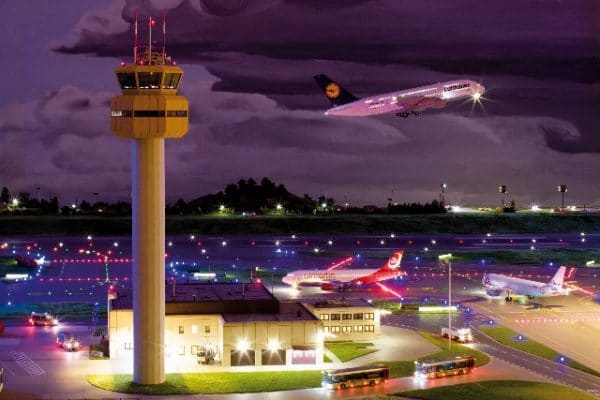
Photo Courtesy of Minatur Wunderland
[alert type = white]
The area code for Germany is 49.
The city code for Hamburg is 40.
Where to Stay:
Fairmont Hotel Vier Jahreszeiten – Luxurious five-star hotel on the Inner Alster Lake which is ranked among Europe’s Grand Hotels for over 110 years. Conveniently located for shopping and sightseeing. Its restaurant Haerlin has two Michelin stars. Neuer Jungfernstieg 9-14,
+49 40 3494 3152; www.fairmont.com
Hotel Baseler Hof – Private, family-owned design hotel in the heart of the city. Shopping arcades and major attractions within walking distance. Esplanade 11, +49 40 359 060; www.baselerhof.de
The George – a British themed design hotel in the party district of St. Pauli. Its popular bar offers a 60–page drink menu. The banks of the nearby Aussenalster Lake offer peaceful tree-lined paths for joggers and strollers. Barcastrasse 3, +49 40 2800 300; www.thegeorge-hotel.de.
Where to Eat:
Fischereihafen – a Hamburg institution where locals and celebrities alike appreciate typical regional dishes as well as modern creations. Summer dining on the terrace with views of the busy port and passing ships is the perfect ambience for a tasty fish such as the house specialty, “North Sea turbot with Pommery mustard sauce.” Große Elbstraße 143 (Altona), + 49 40 381 816; www.fischereihafenrestaurant.de
Jellyfish – one of Hamburg’s best seafood restaurants supporting sustainable fishing and using solely wild and line-caught fish. It has won several awards for its innovative cuisine. Weidenalle 2, (Eimsbüttel), +49 40 410 5414; www.jellyfish-restaurant.de
Altes Mädchen – an old brewery with 60 different kinds of craft beer. Burgers, sandwiches and more. Take a guided tour to learn more about beer production. Lagerstraße 28b (Schanzenviertel), +49 40 8007 7750; www.altes-maedchen.de
Lokal 1 – Both a restaurant and deli whose owners/chefs offer delicious cuisine prepared with local ingredients and products from farms in the surrounding area where they respect and encourage animal welfare. Kampstraße 25-27 (Schanzenviertel), +49 40 4922 2266; www.lokal1.com
What to Do:
A boat ride is a must in this waterside metropolis and the choices are overwhelming – harbor excursions past docks and container terminals, river cruises, trips to fishing villages, islands and/or beach resorts, rides on ferries, barges, or do-it-yourself paddle boats.
Kunsthalle Hamburg – The city’s art museum reflects 700 years of works that offer visitors a tour through European art history from the Middle Ages to the present. Glockengießerwall; www.hamburger-kunsthalle.de
Visit Hamburg’s Rathaus (City Hall), the city’s neo-renaissance architectural centerpiece. Hourly tours are available in English. 1 Rathausmarkt; www.hamburg-travel.com
Take Tea – Like coffee, tea has figured in the port city’s past, often stored in those warehouses before being sent on to cities throughout Europe. Messmer Momentum is both a tea house and museum. The sleek café overlooks a canal. Am Kaiserkai 10; www.messer-momentum.de
[/alert]

